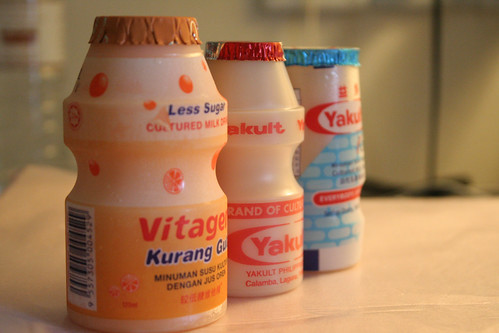 |
| It's all just bacterial media. Photo from Flickr user Jepster. |
Here is a paper:
Yes. This assumption would be wrong. This paper is about yogurt.
The authors claim that eating probiotic yogurt is associated with what they repeatedly describe as a 'glow of health,' sometimes with quotes and at least once without. I'll give them the benefit of the doubt as far as describing observable phenomena goes: the authors are all affiliated with MIT rather than Yoplait and they primarily discuss mice. For mice, the 'glow of health' includes thick, shiny hair and lustrous skin. These experimental animals were fed Lactobacillus reuteri within yogurt and on its own. As compared with control mice, the bacteria-eating mice were indeed significantly shinier and had thicker skin. All of these effects may be related to levels of the anti-inflammatory cytokine IL-10, as those 'glow'-ing traits weren't seen in mice without IL-10.
Some select quotes:
Taken together with our earlier data, this led us to postulate that probiotic bacteria induce host physiological changes including a more acidic pH resulting in radiant skin and shiny hair signaling peak health and fertility and thus a good reproductive investment.(A good reproductive investment for the bacteria or the host?)
Extrapolation from data of mice to humans suggests that excessive inflammation in the form of uncontrolled IL-17A subverts scalp hair growth, and this may be remedied by eating probiotic bacteria such as L. reuteri, but interpretation is complicated by disparities in hair on scalp versus other body sites of these species [37]. Nonetheless, aged male mice eating probiotics displayed Il-10-dependent dense fur together with elevated testosterone and increased virility (data not shown) when compared with mice eating control diet alone. It is unknown whether eating of probiotic yogurt may forestall or reverse follicular activities of hormones in human subjects.
This study leaves me with a bad taste in my mouth. The authors fail to address the actual differences between a probiotic-yogurt-based diet and the control diet; bacteria may just be more nutritive than the usual rat food. The sample size also doesn't appear to be larger than 20 animals in any one group. Last year's GM corn study had some similar issues. Even so, it's always interesting to see product claims (or even conventional wisdom, though I suspect it's still mostly marketing) put to the test.